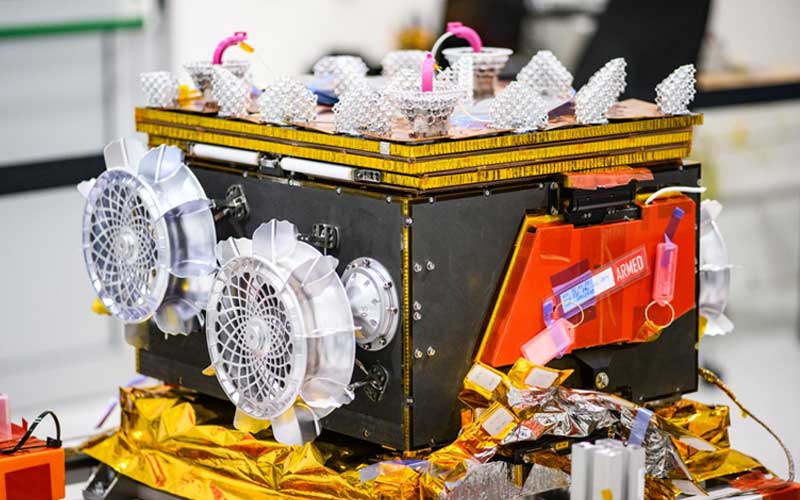
A small rover developed by France and Germany is on its way to Japan for integration with the Martian Moon eXploration (MMX) probe. The rover, which is called Idefix after the small white terrier from the Asterix comics, will be the first ever to explore the surface of the Martian moon Phobos.
DLR announced on November 11 that Idefix had begun its journey to Japan and was expected to arrive by the end of January. Integration with the MMX probe is expected to begin in February.
“Together with our French partners at CNES, we are delighted that Idefix is now making its way to Japan to travel to the Martian moon Phobos on board the MMX mission in close cooperation with JAXA,” said Anke Kaysser-Pyzalla, chair of the DLR executive board.
The Idefix rover measures 51 centimetres in length and has a mass of just 25 kilograms. It is equipped with the miniRAD radiometer and Raman Spectrometer for MMX (RAX) instruments that will be used to measure thermal radiation from the moon’s surface and to characterize its mineralogical properties. It will, however, first need to get through a unique landing procedure.
Once the MMX probe passes within around 100 metres of Phobos, it will deploy the rover. Idefix will then land unaided and perform several “somersaults,” which, according to Dr Markus Grebenstein from the DLR Institute of Robotics and Mechatronics, will allow it to touch down on the surface undamaged. It will then autonomously right itself if needed, unfold its solar panels, and begin its survey of Phobos traveling a few millimetres per second.
In addition to performing a thermal and mineralogical survey of the moon, Idefix will also allow researchers to prove that a wheeled rover can operate in ultra-low gravity environments.
The MMX mission had been expected to be launched aboard a Japanese H3 flight later this year. However, the failure of the maiden flight of the rocket in 2023 compounded existing delays, forcing JAXA to push the launch of MMX until late 2026.







